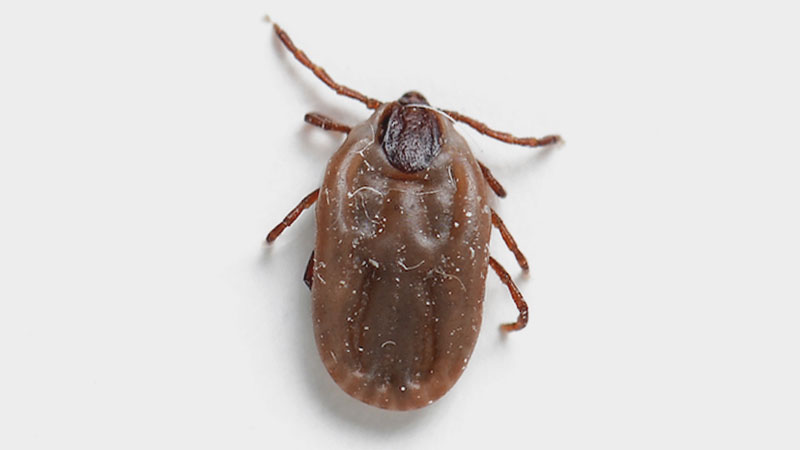Let’s Talk Ticks
Rather than just a nuisance or warm weather inconvenience, ticks are dangerous pests capable of transmitting debilitating diseases at increasingly alarming rates. Tickborne diseases can easily go undiagnosed and have long-lasting consequences, as some cause symptoms that can be confused for the flu while others result in strange developments such as a red meat allergy. Different tick species pose different threats, and these pests have become established in various areas across the country. While there are nearly 100 different tick species found in the United States, these are the most common ones and the diseases they can transmit.
Species of Ticks

Blacklegged (Deer) Tick
Blacklegged ticks are primarily found throughout the eastern United States, as well as the north central region of the country. This species is also known as the deer tick, as their preferred host is the white-tailed deer. Blacklegged ticks typically hide in grass or shrubs, waiting for a passing host such as a human or wildlife like deer or mice. Measuring approximately 1/8” in size, these tiny ticks are about the size of a sesame seed but can pose serious health issues, as they’re the main transmitters of Lyme disease.

American Dog Tick
Found throughout the U.S., except in the Rocky Mountains area, the American dog tick is named after its preference for feeding on domestic dogs. This species is a member of the hard tick family, which means they have a hard exterior shield. They prefer to wait amongst grassy areas with low vegetation for larger mammals to pass by. Due to their tendency to latch onto domestic dogs, these ticks can be brought inside the home upon their host. American dog ticks are a primary vector of Rocky Mountain spotted fever (RMSF), which can cause fever, chills and headaches.

Brown Dog Tick
Brown dog ticks can be found across the country and are named after their reddish-brown color, as well as their tendency to feed on domestic dogs. This species is commonly encountered indoors, capable of being brought inside while embedded in a dog and preferring the warm, dry conditions of a home. Unlike other species, brown dog ticks can complete their life cycle indoors. While these pests prefer to feed on dogs and can transmit diseases to our furry friends including canine ehrlichiosis, brown dog ticks will also feed on humans and can transmit diseases including Rocky Mountain spotted fever (RMSF).

Lone Star Tick
The lone star tick, named for the single silvery-white spot found on the female’s back, is most commonly found in the southern region of the country but is also widely distributed in the east. Compared to other species, lone star ticks are quite aggressive and are known to seek out human hosts. This species is typically found in shaded areas such as the woods, as they cannot survive long exposure to the sun. Lone star ticks can transmit diseases such as tularemia, Heartland virus and Bourbon virus. They’re also known to cause alpha-gal syndrome, a food allergy to red meat and other mammal products that people can develop after being bitten.

Rocky Mountain Wood Tick
The Rocky Mountain wood tick is aptly named after the fact that it is found in the Rocky Mountain states, such as Colorado and Montana. During the adult stage of their life cycle, these ticks will crawl along the ground and climb up vegetation along the edge of trails as they wait for host to pass by, such as a human or deer. This species is a primary vector of Rocky Mountain spotted fever, which the ticks contract themselves after feeding on small animals such as rodents. Rocky Mountain wood ticks are also known to transmit Colorado tick fever, which can cause headaches, fever and muscle pain. Photo Credit: James Gathany via the CDC website.
Diseases that come from Ticks
Scroll through the maps below to see the regions where each tick-borne illness has been found and then read about them below. All maps use data from the CDC.






Anaplasmosis
Anaplasmosis can be transmitted to humans via the bite of an infected blacklegged tick. Symptoms typically surface within one to two weeks following a bite, which can include fever, headaches and nausea. In rare cases, anaplasmosis can cause respiratory failure, bleeding issues and even death.
Ehrlichiosis
Ehrlichiosis is typically transmitted by infected lone star ticks and blacklegged ticks. Early symptoms such as chills, muscle aches and headaches can surface in the first five days following a bite. Some people report seeing a rash develop after suffering from fever, which can appear as red dots. In rare cases, the disease can lead to serious health issues such as damage to the brain or nervous system, organ failure and uncontrolled bleeding.
Lyme disease
Transmitted by infected blacklegged ticks, Lyme disease is known for causing a circular red rash resembling a “bull’s eye” to appear near the bite site. Flu-like symptoms such as chills and joint pain can occur one to four weeks after being bitten, while chronic conditions such as arthritis and nervous system issues can occur months or years later.
Rocky Mountain spotted fever
Rocky Mountain spotted fever (RMSF) can be transmitted by a number of different tick species, including the Rocky Mountain wood tick, brown dog tick and American dog tick. RMSF can pose serious health problems and has a mortality rate above 20 percent if not treated early. One of the main signs of the disease is a full body rash that can develop a few days following a bite. Other symptoms include fever and nausea, as well as permanent damage to blood vessels that can cause paralysis and mental disability.
Tularemia
In the United States, tularemia is commonly transmitted by the American dog tick, lone star tick and Rocky Mountain wood tick. Following a bite from an infected tick, symptoms can take up to 21 days to appear. Most cases of the disease are characterized by flu-like symptoms including fever, chills, joint pain and loss of appetite.





